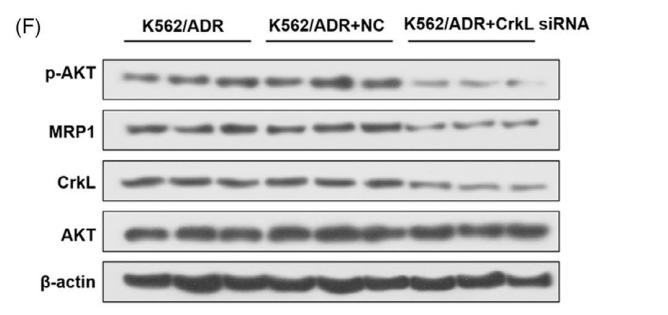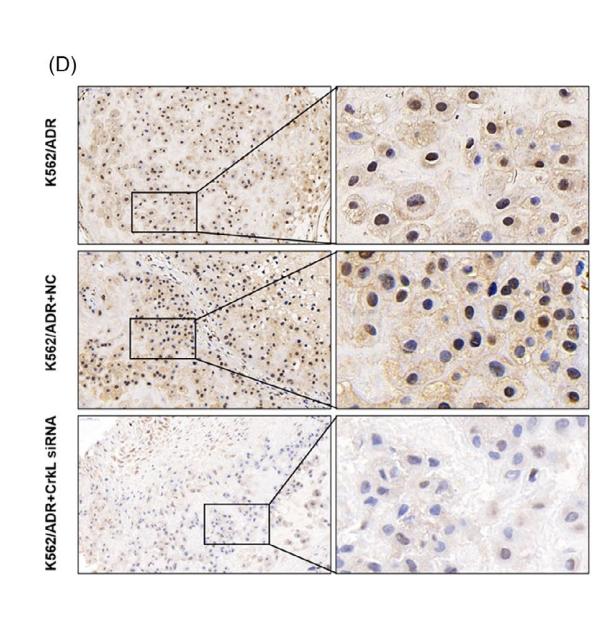CrkL Antibody - #AF7805
| Product: | CrkL Antibody |
| Catalog: | AF7805 |
| Description: | Rabbit polyclonal antibody to CrkL |
| Application: | WB |
| Reactivity: | Human, Mouse, Rat, Monkey |
| Prediction: | Pig, Zebrafish, Bovine, Horse, Sheep, Rabbit, Dog, Chicken, Xenopus |
| Mol.Wt.: | 39kDa; 34kD(Calculated). |
| Uniprot: | P46109 |
| RRID: | AB_2844169 |
Related Downloads
Protocols
Product Info
*The optimal dilutions should be determined by the end user.
*Tips:
WB: For western blot detection of denatured protein samples. IHC: For immunohistochemical detection of paraffin sections (IHC-p) or frozen sections (IHC-f) of tissue samples. IF/ICC: For immunofluorescence detection of cell samples. ELISA(peptide): For ELISA detection of antigenic peptide.
Cite Format: Affinity Biosciences Cat# AF7805, RRID:AB_2844169.
Fold/Unfold
Crk L; Crk like protein; Crk-like protein; Crkl; CRKL_HUMAN; Crkol; HGNC:2363; Oncogene CrkL; V crk avian sarcoma virus CT10 oncogene homolog like; v crk sarcoma virus CT10 oncogene homolog (avian) like; V crk sarcoma virus CT10 oncogene homolog avian like;
Immunogens
- P46109 CRKL_HUMAN:
- Protein BLAST With
- NCBI/
- ExPASy/
- Uniprot
MSSARFDSSDRSAWYMGPVSRQEAQTRLQGQRHGMFLVRDSSTCPGDYVLSVSENSRVSHYIINSLPNRRFKIGDQEFDHLPALLEFYKIHYLDTTTLIEPAPRYPSPPMGSVSAPNLPTAEDNLEYVRTLYDFPGNDAEDLPFKKGEILVIIEKPEEQWWSARNKDGRVGMIPVPYVEKLVRSSPHGKHGNRNSNSYGIPEPAHAYAQPQTTTPLPAVSGSPGAAITPLPSTQNGPVFAKAIQKRVPCAYDKTALALEVGDIVKVTRMNINGQWEGEVNGRKGLFPFTHVKIFDPQNPDENE
Predictions
Score>80(red) has high confidence and is suggested to be used for WB detection. *The prediction model is mainly based on the alignment of immunogen sequences, the results are for reference only, not as the basis of quality assurance.
High(score>80) Medium(80>score>50) Low(score<50) No confidence
PTMs - P46109 As Substrate
| Site | PTM Type | Enzyme | Source |
|---|---|---|---|
| R11 | Methylation | Uniprot | |
| S41 | Phosphorylation | Uniprot | |
| S42 | Phosphorylation | Uniprot | |
| T43 | Phosphorylation | Uniprot | |
| C44 | S-Nitrosylation | Uniprot | |
| Y48 | Phosphorylation | Uniprot | |
| Y92 | Phosphorylation | Uniprot | |
| T95 | Phosphorylation | Uniprot | |
| T96 | Phosphorylation | Uniprot | |
| T97 | Phosphorylation | Uniprot | |
| S107 | Phosphorylation | Uniprot | |
| S112 | Phosphorylation | Uniprot | |
| S114 | Phosphorylation | Uniprot | |
| Y127 | Phosphorylation | Uniprot | |
| T130 | Phosphorylation | Uniprot | |
| Y132 | Phosphorylation | Uniprot | |
| K145 | Ubiquitination | Uniprot | |
| Y177 | Phosphorylation | Uniprot | |
| K180 | Acetylation | Uniprot | |
| K180 | Ubiquitination | Uniprot | |
| S184 | Phosphorylation | Uniprot | |
| S185 | Phosphorylation | Uniprot | |
| S195 | Phosphorylation | Uniprot | |
| S197 | Phosphorylation | Uniprot | |
| Y198 | Phosphorylation | Uniprot | |
| Y207 | Phosphorylation | A9UF07 (BCR/ABL fusion) , A0A173G4P4 (Abl fusion) , P00519 (ABL1) | Uniprot |
| T212 | Phosphorylation | Uniprot | |
| T213 | Phosphorylation | Uniprot | |
| T214 | Phosphorylation | Uniprot | |
| S220 | Phosphorylation | Uniprot | |
| S222 | Phosphorylation | Uniprot | |
| T228 | Phosphorylation | Uniprot | |
| S232 | Phosphorylation | Uniprot | |
| Y251 | Phosphorylation | Uniprot | |
| K253 | Acetylation | Uniprot | |
| K253 | Ubiquitination | Uniprot | |
| T254 | Phosphorylation | Uniprot | |
| K283 | Ubiquitination | Uniprot | |
| K292 | Ubiquitination | Uniprot |
Research Backgrounds
May mediate the transduction of intracellular signals.
Interacts with tyrosine-phosphorylated EPOR and INPP5D/SHIP1. Interacts with DOCK2 and DOCK5 via its first SH3 domain. Interacts with phosphorylated CBLB and IRS4.
Belongs to the CRK family.
Research Fields
· Cellular Processes > Cellular community - eukaryotes > Focal adhesion. (View pathway)
· Cellular Processes > Cell motility > Regulation of actin cytoskeleton. (View pathway)
· Environmental Information Processing > Signal transduction > MAPK signaling pathway. (View pathway)
· Environmental Information Processing > Signal transduction > ErbB signaling pathway. (View pathway)
· Environmental Information Processing > Signal transduction > Rap1 signaling pathway. (View pathway)
· Human Diseases > Infectious diseases: Bacterial > Bacterial invasion of epithelial cells.
· Human Diseases > Infectious diseases: Bacterial > Shigellosis.
· Human Diseases > Cancers: Overview > Pathways in cancer. (View pathway)
· Human Diseases > Cancers: Overview > MicroRNAs in cancer.
· Human Diseases > Cancers: Specific types > Renal cell carcinoma. (View pathway)
· Human Diseases > Cancers: Specific types > Chronic myeloid leukemia. (View pathway)
· Organismal Systems > Immune system > Chemokine signaling pathway. (View pathway)
· Organismal Systems > Immune system > Fc gamma R-mediated phagocytosis. (View pathway)
· Organismal Systems > Nervous system > Neurotrophin signaling pathway. (View pathway)
· Organismal Systems > Endocrine system > Insulin signaling pathway. (View pathway)
References
Application: WB Species: Human Sample: K562/ADR cells
Application: IHC Species: Human Sample: K562/ADR cells
Restrictive clause
Affinity Biosciences tests all products strictly. Citations are provided as a resource for additional applications that have not been validated by Affinity Biosciences. Please choose the appropriate format for each application and consult Materials and Methods sections for additional details about the use of any product in these publications.
For Research Use Only.
Not for use in diagnostic or therapeutic procedures. Not for resale. Not for distribution without written consent. Affinity Biosciences will not be held responsible for patent infringement or other violations that may occur with the use of our products. Affinity Biosciences, Affinity Biosciences Logo and all other trademarks are the property of Affinity Biosciences LTD.


